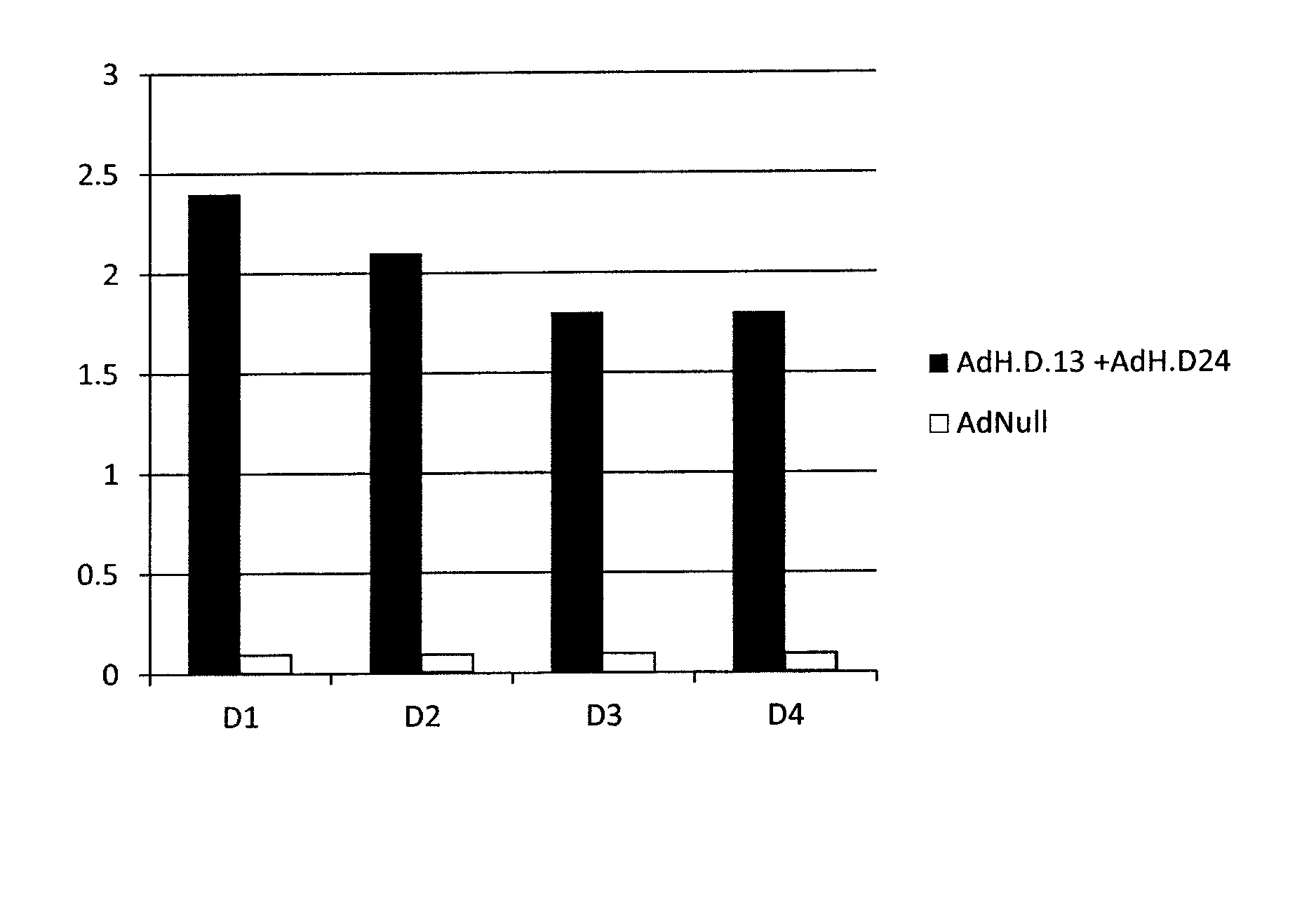Adenoviral vector-based dengue fever vaccine
a technology of dengue fever and adenoviral vector, which is applied in the field of adenoviral vector-based dengue fever vaccine, can solve the problems of travelers and military personnel at risk of exposure, shock and eventual death, and plasma leakag
- Summary
- Abstract
- Description
- Claims
- Application Information
AI Technical Summary
Benefits of technology
Problems solved by technology
Method used
Image
Examples
example 1
[0108]This example demonstrates the construction of an adenoviral vector comprising a chimeric hexon protein and multiple nucleic acid sequences each encoding a Dengue antigen.
[0109]E1 / E3 / E4-deleted adenoviral vectors based on a serotype 5 adenovirus were generated using the AdFAST™ homologous recombination system (GenVec, Inc., Gaithersburg, Md.; described in Brough et al., J. Virol., 70: 6497-6501 (1996)). The adenoviral vectors were further engineered to contain a chimeric hexon protein, in which the Ad5 hypervariable regions were replaced with the hypervariable regions from a serotype 43 adenovirus, and the threonine residue at position 333 of the chimeric hexon protein was replaced with a methionine residue (i.e., a T333M mutation). One such adenoviral vector (AdH.D13) was further engineered to express the Dengue virus 1 (DV1) and DV3 PreM and envelope (prM&E) fusion proteins (DME1 and DME3). Expression of the DME1 and DME3 genes was under the control of the human and murine cy...
example 2
[0115]This example demonstrates that the adenoviral vectors of the invention induce an immune response against Dengue virus in mice.
[0116]Mice were immunized with an Ad5 vector that does not contain a transgene (AdNull), or a mixture of equal parts of AdH.D13 and AdH.D24 (described in Example 1), via intramuscular (IM) administration. Four weeks later, the mice were bled, and serum was tested for Dengue-specific antibodies using an ELISA assay. Serum was diluted 1:100 and added to wells pre-coated with either D1, D2, D3, or D4 envelope protein. After washing and incubation with secondary antibody, the plates were read in a plate reader. The figure shows that no Dengue-specific antibody was detected in mice immunized with AdNull. However, antibodies that reacted against all four dengue envelope antigens were detected in mice immunized with the mixture of the two adenoviral vectors which collectively expressed D1, D2, D3, and D4 preM and envelope fusion proteins.
[0117]The results of t...
PUM
| Property | Measurement | Unit |
|---|---|---|
| nucleic acid | aaaaa | aaaaa |
| nucleic acid sequence | aaaaa | aaaaa |
| resistance | aaaaa | aaaaa |
Abstract
Description
Claims
Application Information
 Login to View More
Login to View More - R&D
- Intellectual Property
- Life Sciences
- Materials
- Tech Scout
- Unparalleled Data Quality
- Higher Quality Content
- 60% Fewer Hallucinations
Browse by: Latest US Patents, China's latest patents, Technical Efficacy Thesaurus, Application Domain, Technology Topic, Popular Technical Reports.
© 2025 PatSnap. All rights reserved.Legal|Privacy policy|Modern Slavery Act Transparency Statement|Sitemap|About US| Contact US: help@patsnap.com

